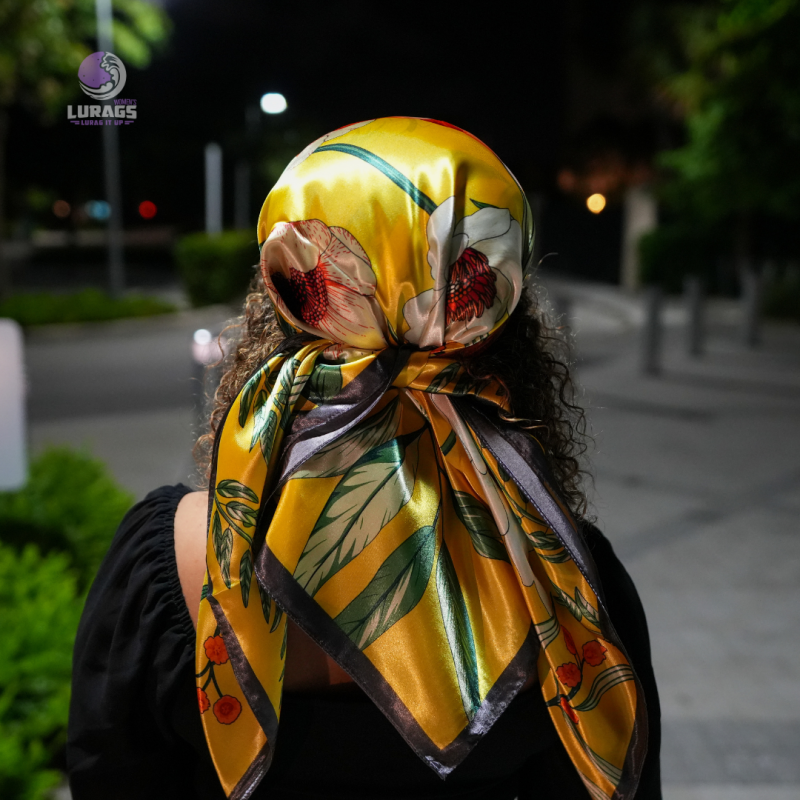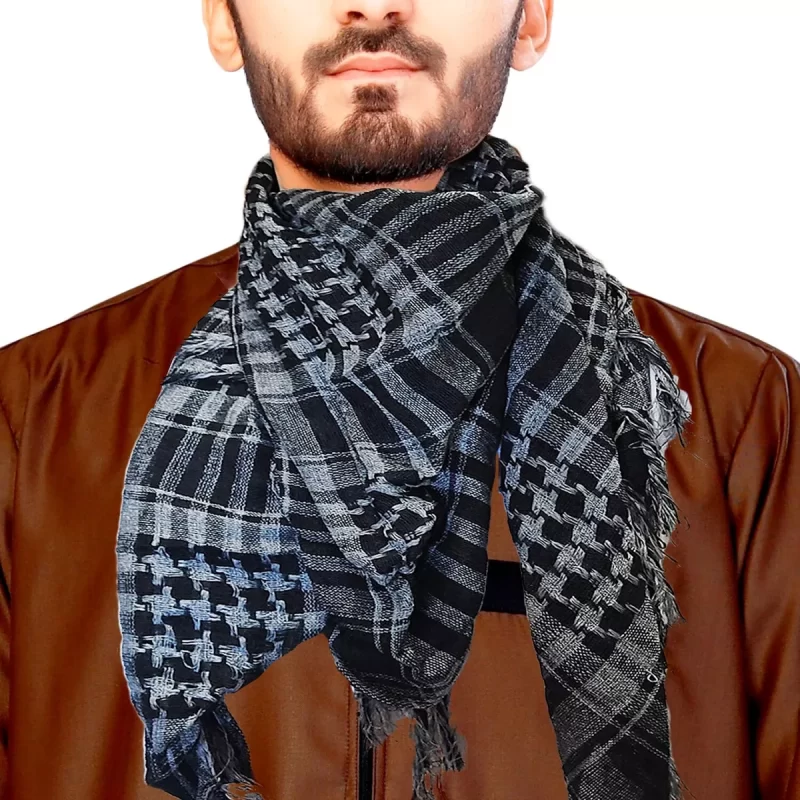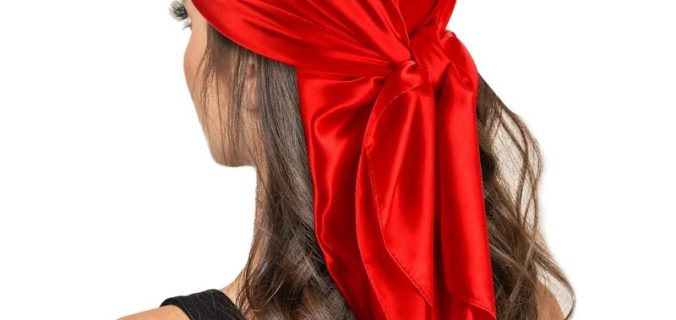Introduction
Wearing a head scarf isn’t just a fashion statement—it’s a versatile accessory that can elevate your style for any occasion, from casual outings to formal events. Whether you’re looking to add a pop of color, protect your hair from the elements, or simply change up your look, mastering the art of tying a head scarf opens up a world of possibilities. Here’s a comprehensive guide to help you navigate the art of wearing a head scarf with confidence and flair.
Choosing the Right Scarf
The first step in mastering the art of wearing a head scarf is selecting the right scarf for the occasion. Consider the fabric, pattern, and color that complement your outfit and personal style:
- Fabric: Opt for lightweight fabrics like silk or chiffon for a breezy, elegant look in warmer weather. For colder days, choose scarves made from wool or cashmere to keep you warm and stylish.
- Pattern and Color: Solid colors offer versatility and can complement various outfits effortlessly. Alternatively, bold prints and patterns can add a statement to your ensemble, making your head scarf the focal point of your look.
Basic Techniques
There are several classic ways to tie a head scarf, each suitable for different occasions and styles:
- Classic Headband: Fold the scarf into a thin strip and tie it around your head like a headband. This style is perfect for casual outings and keeping hair away from your face.
- Turban Style: Fold the scarf into a triangle, place the longest side at your forehead, and tie the ends securely at the nape of your neck. This sophisticated look is ideal for both casual and formal settings.
- Pirate Style: Fold the scarf into a triangle, place the longest side at your forehead, cross the ends at the back of your neck, and bring them forward to tie at the top of your head. This style adds a playful touch to your outfit.
Formal Occasions
For formal events such as weddings or cocktail parties, opt for luxurious fabrics and elegant tying techniques:
- Glamorous Twist: Wrap a silk scarf around your head, leaving the ends hanging loose. Twist the ends together and tuck them neatly under the scarf for a chic, sophisticated look.
- Chignon Wrap: Fold a square scarf into a triangle, place it over your head with the longest side at your forehead, and tie the ends underneath at the nape of your neck. Tuck any loose ends for a polished appearance.
Casual Chic
For everyday wear or casual outings, choose comfortable fabrics and effortless tying methods:
- Top Knot: Fold a square scarf into a triangle, place it over your head with the longest side at your forehead, and tie the ends into a knot at the top of your head. This laid-back style is perfect for running errands or brunch with friends.
- Bohemian Wrap: Drape a large scarf over your head, allowing the ends to hang loosely. Secure the scarf with bobby pins or tie the ends under your hair for a carefree, bohemian-inspired look.
Seasonal Variations
Adjust your head scarf style based on the season and weather conditions:
- Spring/Summer: Opt for lightweight scarves in bright colors or floral prints to embrace the season. Tie loosely for a relaxed vibe or secure tightly for a sporty look.
- Fall/Winter: Choose scarves in rich tones or cozy fabrics like wool or cashmere to stay warm and stylish. Experiment with wrapping techniques that cover your ears for extra warmth.
Accessorizing
Enhance your head scarf look with complementary accessories:
- Earrings: Pair your head scarf with statement earrings to draw attention to your face and add a touch of glamour.
- Sunglasses: Complete your outfit with stylish sunglasses that complement your head scarf, creating a cohesive and fashionable ensemble.
Confidence is Key
Above all, wear your head scarf with confidence. Experiment with different styles, colors, and tying techniques until you find what suits you best. Whether you’re attending a formal event, lounging by the pool, or exploring a new city, a head scarf can be your go-to accessory for adding personality and charm to any outfit.

Choosing the Right Scarf
The first step in mastering the art of wearing a head scarf is selecting the perfect piece. Consider the following factors:
- Fabric: Choose materials based on the climate and occasion. Lightweight cotton and silk are ideal for warmer weather and a more delicate look, whereas wool and thicker fabrics offer warmth during cooler months.
- Pattern and Color: Solid colors can be paired easily with any outfit, while prints like paisley, polka dots, or florals can add a pop of personality. Consider matching or contrasting your scarf with your outfit for different effects.
- Size: Larger scarves offer more versatility in styling, while smaller squares are perfect for precise folds and knots.
Basic Techniques for Tying a Head Scarf
1. The Classic Knot
A simple yet elegant style involves folding the scarf into a triangle, placing the midpoint at the nape of your neck, and tying the ends into a knot at the forehead or side of the head. Adjust the fabric to create a voluminous look or keep it sleek.
2. The Turban Wrap
This bohemian-inspired style involves wrapping the scarf around your head like a bandage, starting at the nape and twisting the fabric as you go. Tuck in the ends neatly for a polished finish or leave them loose for a more casual vibe.
3. The Bow Tie
Fold your scarf into a long rectangle, wrap it around your head, and tie it into a bow at the side or back. This style adds a touch of whimsy and femininity to any outfit.
4. The Headband Look
Fold a narrow scarf lengthwise and place it across your forehead, tying it at the base of your hairline or behind your head. This effortless style is perfect for keeping flyaways at bay during active days.

Styling Tips for Different Occasions
- Casual Day Out: Pair a brightly colored or patterned scarf with denim and a simple top for a playful, casual look. Try the classic knot or headband style for a laid-back yet put-together vibe.
- Office Wear: Opt for a silk scarf in neutral tones or subtle prints. The turban wrap or a neatly tied bow adds a touch of sophistication to your work attire without being too bold.
- Evening Events: Drape a luxurious, shimmering scarf over your hair and secure with a delicate knot or jeweled pin for a glamorous, old Hollywood-inspired look. Pair with an elegant gown or cocktail dress for maximum impact.
- Beach or Vacation: Lightweight, breathable scarves in vibrant hues or tropical prints are perfect for a beach day or vacation getaway. Use the classic knot or headband style to keep your hair off your face while adding a splash of color.
Accessorizing with Earrings and Hats
Don’t forget the power of complementary accessories. Statement earrings can elevate a simple head scarf look, while a wide-brimmed hat paired with a scarf can create a chic and protective ensemble for sunny days.
Cultural Significance and Respect
It’s important to note that head scarves hold deep cultural and religious significance for many communities. While embracing this accessory as a fashion statement, be respectful of its traditional uses and avoid appropriating cultural symbols without understanding their meaning.

Conclusion
Mastering the art of wearing a head scarf allows you to express your creativity and elevate your style for every occasion.
Whether you prefer classic elegance, casual chic, or bohemian flair,
there’s a head scarf tying technique that suits your taste and complements your outfit.
Embrace the versatility of this timeless accessory and enjoy the endless possibilities it brings to your wardrobe. With these tips and techniques, you’ll confidently step out knowing you’ve mastered the art of wearing a head scarf with style and grace.
